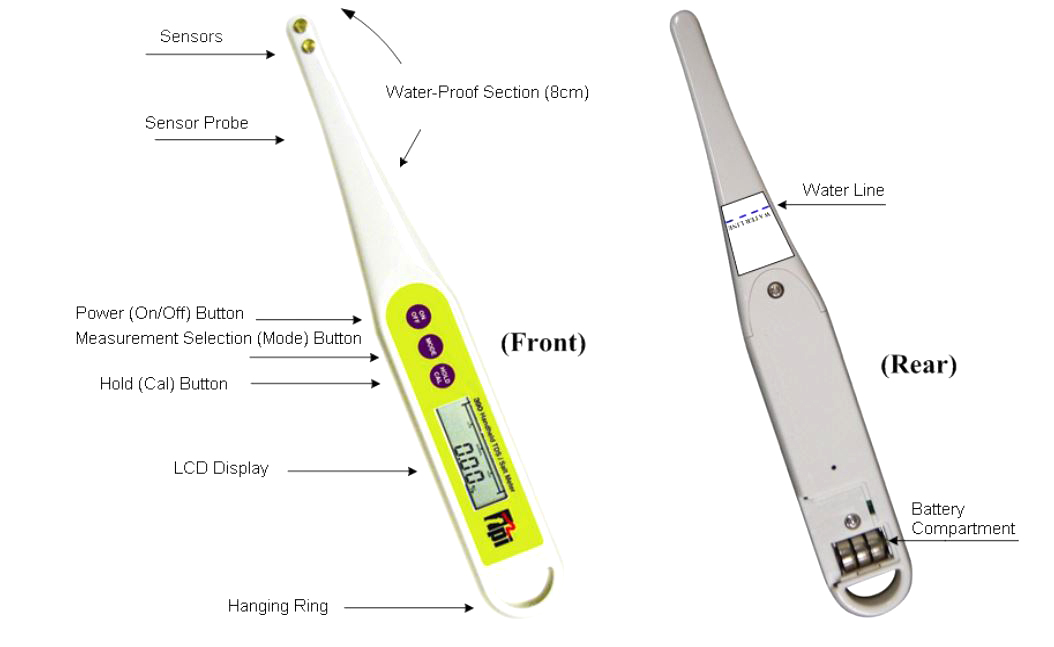TPI Meter 390A, Total Dissolved Solid (TDS) and Salt Concentration
Measure Total Dissolved Solids (TDS), salt and temperature for food, water quality and HVAC maintenance.Easy-to-read LCD display. Measures temperature, TDS concentration and salt levels in solutions.
Includes
- Total Dissolved Solid (TDS) and Salt Concentration Meter
- Sensor protection cap
- 2 Supporting spoon
- NaCl standard solution (40g)
- Manual
- Batteries
Features
- Water: Test TDS levels to determine purity
- Food: Test the amount of salt in food, seafood, or processed foods
- Health: Monitor the amount of salt intake
- Water Filtration: Test for TDS to determine performance level of filtration systems
- Pools & Spas: Monitor TDS levels to prevent maintenance problems
- HVAC:
- Test condensate water in cooling tower and humidifier reservoir applications to prevent bacterial growth
- Test TDS levels in make-up water to prevent scale formation, corrosion, and embrittlement
- Reduce water and chemical consump tion in boilers and cooling towers
- Determine when to perform blowdown and add make-up water
- Prevent contamina tion and corrosion of control valves, heat exchangers, and steam traps
- Verify automated TDS contollers are functioning properly
- Prevent low quality wet steam generation in boilers due to foaming caused by high TDS levels
Description
- The 390 measures the concentration of dissolved NaCl/TDS in liquids.
- Simply immerse the tip into liquids to determine the NaCl/TDS content and temperature
TDS is the sum of all inorganic particulate material.
- Water contains a variety of minerals and salts, such as calcium, magnesium, carbonate, chloride and nitrate etc.
- TDS is the parameter used when measuring the total sum of all these compounds in water.
- TDS is an indicator used for wastewater analysis and measuring mineral content of water.

Functions
Sensors
Used to measure Salt concentration, TDS and Temperature. The surface is gold plated and the temperature sensor is contained inside. This area is waterproof.
Power (ON/OFF) button
Used to turn the power on and off. After use, the power turns off automatically within one minute.
Measurement selection (MODE) button
Used to select the measurement mode: Salt concentration(%), TDS(ppm, mg/L) or Temp.(°C). When the power is turned on, the default mode is the temperature mode.
Hold / CAL button
Used to freeze the measured value during a test, perform Auto Calibration or switch between Celsius and Fahrenheit (°C/°F). After viewing measurement, press again to clear LCD screen and start another test.
FAQ
Why is controlling TDS levels important in HBAC applications?
High TDS levels in HVAC equipment cause corrosion, loss of efficiency, and premature failure.
What is the advantage of testing TDS in boiler applications?
By monitoring TDS levels in HVAC equipment, a proper blowdown schedule can be implemented to prevent premature failure and lower operating costs.
Why test drinking water for TDS?
The EPA advises the maximum contamination level (MCL) is 500ppm for TDS. TDS levels in excess of 1000ppm are generally considered unfit for human consumption. High levels of TDS warrant further investigation, as the cause may be toxic ions such as arsenic, cadmium, and nitrate.
How can TDS levels be reduced?
In drinking water, common ways to reduce TDS levels are, carbon water filters, reverse osmosis, and distillation.
What are acceptable levels of TDS in drinking water?
0 to 50ppm - Ideal drinking water usually attained through reverse osmosis, deionization, micro filtration, and distillation.
50 to 140ppm - Considered an acceptable level for carbon filtering.
140 to 400ppm - Average tap water
170ppm and above - Hard water
500ppm - EPA maximum contamination level.